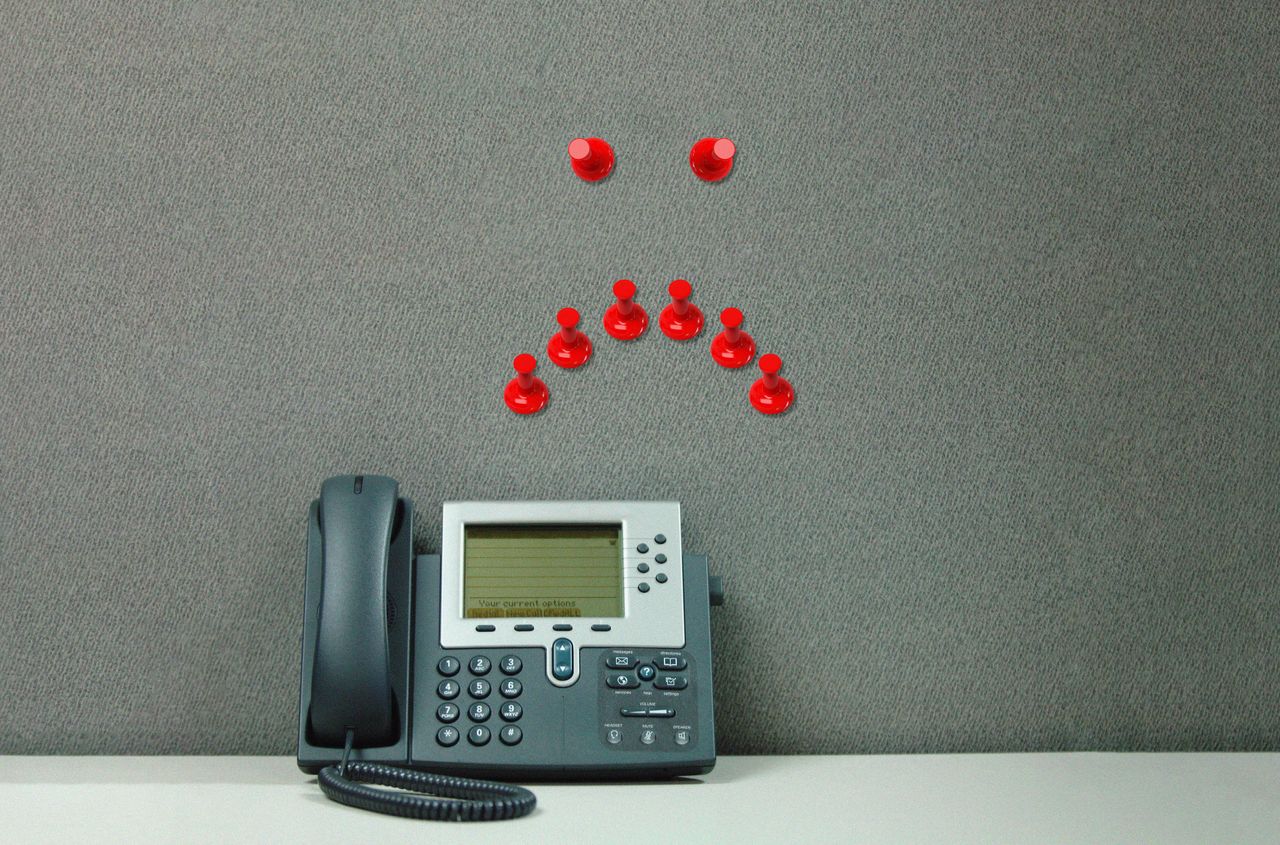We Asked Workers Why They’re Not Coming Back to the Office
Terrible commutes. Expensive child care. Employees explain why they will keep working from home.
What’s still keeping American workers out of the office?
At a time when restaurants, planes and concert arenas are packed to the rafters, office buildings remain half full. Thinly populated cubicles and hallways are straining downtown economies and, bosses say, fragmenting corporate cultures as workers lose a sense of engagement.
Yet workers say high costs, caregiving duties, long commutes and days still scheduled full of Zooms are keeping them at home at least part of the time, along with a lingering sense that they’re able to do their jobs competently from anywhere. More than a dozen workers interviewed by The Wall Street Journal say they can’t envision returning to a five-day office routine, even if they’re missing career development or winding up on the company layoff list.
Managers say they will renew the push to get employees back into offices later this year. The share of companies planning to keep office attendance voluntary, rather than mandatory, is dropping, according to a survey released in May of more than 200 corporate real-estate executives conducted by property-services firm CBRE, one of the largest managers of U.S. office space.
A battle of wills could be ahead. The gap between what employees and bosses want remains wide, with bosses expecting in-person collaboration and workers loath to forgo flexibility, according to monthly surveys of worker sentiment maintained by Nicholas Bloom, a Stanford University economist who studies remote work.
Escalating expenses
One reason workers say they’re reluctant to return is money. Some who have lost remote-work privileges said they are spending hundreds, or in some cases thousands, of dollars each month on meals, commutes and child care.
One supercommuter who treks to her Manhattan job from her home in Philadelphia negotiated a two-day-a-week limit to her New York office time this year. Otherwise, she said she could easily spend $10,000 a year on Amtrak tickets if she commuted five days a week.
Christos Berger, a 25-year-old mortgage-loan assistant who lives outside Washington, D.C., estimates she spends $2,100 on child care and $450 on gas monthly now that she is working up to three days a week in the office.
Berger and her husband juggled parenting duties when they were fully remote. The cost of office life has her contemplating a big ask: clearance to work from home full time.
“Companies are pushing you to be available at night, be available on weekends,” she said, adding that she feels employers aren’t taking into account parents’ need for family time.
Rachel Cottam, a 31-year-old head of content for a tech company, works full time from her home near Salt Lake City, making the occasional out-of-town trip to headquarters. She used to be a high-school teacher, spending weekdays in the classroom. Back then, she and her husband spent $100 a week on child care and $70 a week on gas. Now they save that money. She even let her car insurance company know she no longer commutes and they knocked $5 a month off the bill.
Friends who have been recalled to offices tell Cottam about the added cost of coffee, lunch and beauty supplies. They also talk about the emotional cost they feel from losing work flexibility.
“For them, it feels like this great ‘future of work’ they’ve been gifted is suddenly ripped away,” she said.
Parent trade-offs
If pandemic-era flexible schedules go away, a huge number of parents will drop out of the workforce, workers say.
When Meghan Skornia, a 36-year-old urban planner and married mother of an 18-month-old son, was looking for a new job last year, she weeded out job openings with strict in-office policies. Were she given such mandates, she said, she would consider becoming an independent consultant.
The firm in Portland, Ore., where Skornia now works requests one day a week in the office, but doesn’t dictate which day. The arrangement lets her spend time with her son and juggle her job duties, she said. “If I were in the office five days a week, I wouldn’t really ever see my son, except for weekends.”
Emotional labor
For some, coming into the office means donning a mask to fit in.
Kenneth Thomas, 42, said he left his investment-firm job in the summer of 2021 when the company insisted that workers return to the office full time. Thomas, who describes himself as a 6-foot-2 Black man, said managing how he was perceived—not slipping into slang or inadvertently appearing threatening through body language—made the office workday exhausting. He said that other professionals of colour have told him they feel similarly isolated at work.
“When I was working from home, it freed up so much of my mental bandwidth,” he said. His current job, treasurer of a green-energy company, allows him to work remotely two or three days a week.
Lost productivity
The longer the commute, the less likely workers are to return to offices.
Ryan Koch, a Berkeley, Calif., resident, went to his San Francisco office two days a week as required late last year, but then he let his attendance slide, because commuting to an office felt pointless. “I’m doing the same video calls that I can be doing at home,” he said.
Koch, who works in sales, said his nonattendance wasn’t noted so long as his numbers were good. When Koch and other colleagues were unable to meet sales quotas in recent weeks, they were laid off. Ignoring the in-office requirement probably didn’t help, he said, adding he hopes to land a new hybrid role where he goes in one or two days.
Jess Goodwin, a 36-year-old media-marketing professional, turned down an offer to go from freelance to full time earlier this year because the role required office time and no change in pay.
Goodwin said a manager “made it really clear that this is what they’re mandating right now and it could change in the future to ‘you have to be back in five days a week.’”
Goodwin, who lives in Brooklyn, N.Y., calculated that subway commutes to Midtown Manhattan would consume more than 150 hours annually, in addition to time spent getting ready for work.
Goodwin’s holding out for a better offer. She said she would consider a hybrid position if it came with a generous package and good commute, adding: “And I would also probably need something in my contract being like, ‘We’re not going to increase the number of days you have to come in.’”
 Copyright 2020, Dow Jones & Company, Inc. All Rights Reserved Worldwide. LEARN MORE
Copyright 2020, Dow Jones & Company, Inc. All Rights Reserved Worldwide. LEARN MORE
Records keep falling in 2025 as harbourfront, beachfront and blue-chip estates crowd the top of the market.
A divide has opened in the tech job market between those with artificial-intelligence skills and everyone else.
Ready to level up your cellar? Here, LANGTONS Head of Auctions, Michael Anderson, selects the bottles to chase from Bordeaux 2022.
There are Bordeaux drops and then there are Bordeaux moments. This is the latter. The 2022 vintage has arrived through LANGTONS with depth across communes and enough quality to satisfy both the curious and the die-hard.
Here is your guide to what deserves a place in the cellar, and in years to come, your dining table.
1. Château Carbonnieux Blanc 2022, Graves, $110
The story of the legendary white of Château Carbonnieux Blanc (Graves, $110) stretches back to the 18th century when, thanks to its crystal clarity, it was introduced to the Sultan of Constantinople’s palace disguised as ‘mineral water from Carbonnieux. Today, the wine retains that luminous freshness in youth but develops dried and candied fruit characters with maturity, making it one of the most versatile whites in the region. This is a wine that can be drunk now through to 2029, so not a long termer.
2. Château Figeac 2022, St-Émilion, $850
If Carbonnieux speaks of crystalline youth, Château Figeac (St-Émilion, $850) speaks of longevity. Few estates can match its claim to 2000 years of continuous occupation, and the 2022 vintage bears that gravitas. Deeply garnet in colour, Cabernet Sauvignon shines here with notes of blackcurrant, blueberry, lilac, tobacco and bay leaf. On the palate, the wine is elegant and mineral, yet vibrantly alive. It’s a stunning effort that will reward those with patience – I’d suggest drinking from 2034–2060. It’s a great investment wine given Figeac’s ascent, too.
3. Château Gazin 2022, Pomerol, $235
In Pomerol, the quiet achiever is Château Gazin ($235), whose neighbours happen to be Petrus and L’Evangile. The 2022 shows deep crimson colour, with aromas of violet, musky plum, roasted chestnut and mocha. Classically proportioned, it offers a palate of ripe black fruits, chalky tannins and mid-palate depth that places it among the appellation’s most compelling releases. This wine sees its best drinking between 2029 and 2040.
4. Château Palmer 2022, Margaux, $1,050
Further south in Margaux, Château Palmer ($1,050) continues its reputation as a ‘Super Second’, officially ranked a Third Growth but revered as the equal of the First Growths. The 2022 is abundant in blackberry jam, chocolate, lavender and smoke, a wine of sheer extract and richness with remarkable intensity. It is best from 2035 and should be showing nicely to 2065. It’s a wine nipping at the heels of the Firsts and a wonderful investment opportunity.”
5. Château Haut-Bailly 2022, Pessac-Léognan, $415
Another of Bordeaux’s historic properties, Château Haut-Bailly (Pessac-Léognan, $415), dates to the mid-15th century. Its 2022 vintage shows blackcurrant pastille, violet and graphite, with a refreshing yet dense palate that finishes chalky and minerally. It is incredibly elegant now, so try from 2030–2045 with ease. A wine worth buying 6–12 bottles of to watch this ‘value’ Bordeaux evolve in the cellar over time.
6. Château Pontet-Canet 2022, Pauillac, $330
The Pauillac commune offers two contrasting but equally celebrated estates. Château Pontet-Canet ($330), founded in 1725, is full-bodied and packed with ripe black fruits supported by finely integrated tannins. The wine is remarkably compelling now, but best after 2029 through to 2045. It’s also a hit in the secondary market amongst speculators.
7. Château Lafite-Rothschild 2022, Pauillac, $1,950
Then there is Château Lafite-Rothschild (Pauillac, $1,950), perhaps the most recognised name in the Médoc. The 2022 vintage has immense grip and presence, offering loganberry, blueberry, wet stones, and forest floor. For me, this is one of the definitive wines of the vintage. It’s one of the world’s most collected and cellared wines. Best from 2034–2070+ and is a triumph.
8. Château Montrose 2022, St-Estèphe, $595
North in St-Estèphe, Château Montrose ($595) demonstrates why this Second Growth is often regarded as a rival to the First Growths. Ample blackberry, cassis and briary fruits meet velvety tannins and cedar, creating a wine of both richness and precision. The wine is fine, aromatic and worth the investment. Most joy to be extracted from 2033 onwards with a 25-year satisfaction window.
9. Château Suduiraut 2022, Sauternes, $99
The sweet wines of Bordeaux complete the spectrum. Château Suduiraut (Sauternes, $99), a neighbour to d’Yquem, delivers a 2022 that is full of marmalade, saffron, lime and orange zest. Its sweetness is cut with a lifted bitterness that lends focus. This wine is showing beautifully now and best from 2028–2035+.
10. Château Cos d’Estournel 2022, St-Estèphe, $690
Finally, another St-Estèphe giant, Château Cos d’Estournel ($690), speaks with intensity and power. A blend dominated by Cabernet Sauvignon and Merlot, the 2022 is tannic, commanding and built for the long haul like every vintage of Cos.
BMW has unveiled the Neue Klasse in Munich, marking its biggest investment to date and a new era of electrification, digitalisation and sustainable design.
By improving sluggish performance or replacing a broken screen, you can make your old iPhone feel new agai


























